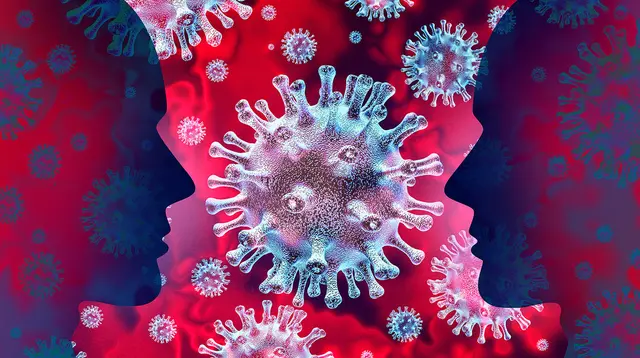Author: Prof. Engr. Zamir Ahmed Awan, Sinologist (ex-Diplomat), Editor, Analyst, Non-Resident Fellow of CCG (Center for China and Globalization), National University of Sciences and Technology (NUST), Islamabad, Pakistan. (E-mail: [email protected]).
The 1918 influenza epidemic was the most severe Pandemic in human history. An H1N1 virus caused it with a DNA segment of avian origin. Although there is no common consensus regarding where the virus originated, it spread worldwide during 1918-1919. In Europe, the epic center was Spain, and in Asia, the epic center was India (West-Bengal). It is assessed that about 500 million people or one-third of the world’s population became diseased with this virus. The number of deaths was evaluated to be at least 50 million worldwide. India has been historically home to many Pandemic, like cholera, Smallpox, Plague, and Typhoid. India is known for Pandemics and epicenter of social evils like Rape, Prostitution, Human Right Violations, Curbing Religious Freedom, Torturing Minorities, Poverty, Smuggling of Human Body organs, etc.
Indian Journal of Medical Research (IJMR) reported that Between July 5 and August 16, 2010, a total of 893 patients appeared the swine flu OPD of ID&BG Hospital, Kolkata (average 29 patients per day). Of them, 440 (49%) had ILI symptoms, and their throat swabs were referred to laboratory surveys. Of these 440 ILI throat swabs, 149 (33.9%) were mentioned from the private nursing homes or medical college hospitals. Influenza A (H1N1) virus infection was established in 129 (29%) patients. Of the 129 laboratory-confirmed patients, 96 (74%) were acknowledged in the ID&BG Hospital, 30 (23%) in the private nursing homes/ medical college hospitals, while three patients keep on isolated in their houses. The most typical symptoms included fever (100%), cough (73%), running nose (54%), sore throat (43%), respiratory distress (25%), and diarrhea (4%). Forty-seven patients (11%) had associated co-morbid circumstances. The collective co-morbidities were chronic obstructive pulmonary disease (COPD) (29.8%), heart disease (21.3%), liver (10.6%), kidney (10.6%) disease, and 2 percent had diabetes. All except four patients recovered with a 5-7 day course of oseltamivir, antibiotics, and paracetamol (Case fatality ratio=0.90%). Of the four patients who died, three were aged >50 yr while one was 13 yr old. All had related co-morbid conditions such as COPD, chronic renal failure, heart failure, and hepatitis.
In August 2010, WHO acknowledged the post-pandemic phase of the H1N1. During this phase, cases and outbursts due to the H1N1 (2009) virus would continue to occur. Early detection of these outbreaks and the implementation of control measures are crucial to limit the spread. The West Bengal State Health Department initiated several control methods. The IB & BG Hospital, Kolkata, was nominated as the nodal hospital to treat cases with a swine flu ward comprising of 35 beds. Amenities for isolation and treatment were also established at the appointed nursing homes, medical colleges, and district hospitals. In Kolkata alone, a total of 310 isolation beds in 25 health institutions were made prepared for such cases. These health facilities were provided with adequate quantities of antivirals. All the nursing personnel, doctors, paramedical staff engaged in the swine flu ward were vaccinated with the swine flu vaccine. The government of West Bengal also made it mandatory for all the private nursing homes to refer to the cases of ILI to ID&BG Hospital for a laboratory test of the H1N1 virus. The laboratory-confirmed ILI patients were encouraged to get admission in ID & BG Hospital, Kolkata, private nursing homes, or medical college hospitals. Five days of treatment with oseltamivir (Tamiflu) was administered to all the laboratory-confirmed patients and their close family contacts. All-encompassing information, education, and communication (IEC) activities were done in the communities to educate the people about influenza prevention.
India has the second-highest number of Covid-19 cases and also the second-highest death toll. It also leads that Coronavirus might have originated in India but detected in China first time.
Due to extreme poverty, Animals and Humans are sharing the same places for drinking water. Lack of sewage facilities and toilets, the pollution is at adverse. With a lack of hygiene awareness and almost no access to health care, it is doubtful that COVID-19 might have originated from India.
Chinese scientists are now arguing that the Coronavirus instigated in India in July-August 2019 when an unbearable heatwave in May-June forced animals and humans to share the same water sources.
Further investigations are ongoing and in-depth research is on the way; it might take some time to reach an absolute conclusion that India is the origin of the Pandemic.
(ASIA PACIFIC DAILY)
 简体中文
简体中文

